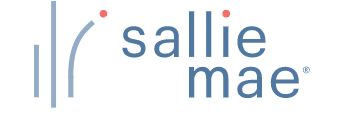
Finding graduate school student loans and financial aid can be a daunting prospect. However, there are a lot of options, including student loans, that can make it affordable.
However, before you dive in and start taking out student loans for graduate school, make sure that you understand all your options. Especially if you're going back to school as an adult.
We've put together an order of operations to pay for graduate school that we think is "the best" for maximizing your potential ROI on your investment in education. While some of these items take time and effort, it's better than taking out a bunch of student loans you won't be able to afford after graduation.
If you already know most of your options and are simply looking to find the best private student loans, check out Credible and compare your options in 2 minutes with no credit check. Try Credible here.
Let's dive in.
The Order Of Operation To Pay For Graduate School
There is a smart order of operations on how to pay for graduate school, and it doesn't start with student loans. Before you ever embark on an graduate program, you need to consider the ROI (return on investment) of your education.
The goal of an advanced degree should be to move your career (and earnings potential) forward. However, in the academic setting, that can be a bit different.
In that case, you need to asses how much you'd potentially pay out of pocket (hopefully next to nothing) given your salary.
When it comes to calculating the ROI, it's all about how much you're going to spend, and how much debt you're going to take on. Follow this chart from best to worst to get an idea of how to pay for your graduate school program.
Scholarships and Grants
Fellowships and Assistantships
Direct Student Loans
Graduate PLUS Loans
Private Student Loans
Of course, there are variations on a theme - especially when it comes to paying for graduate school. For example, your college or university might cover all the costs of tuition, and you just need to pay for the remaining items. This could lead you to change your order of operations, since Graduate PLUS loans might be off the table.
It's always important to analyze what you need for your own situation.
Scholarships and Grants
The first place to start when paying for graduate school is scholarships and grants. Scholarships and grants work a little different on the graduate level.
While there are still public scholarships that anyone can apply to, many graduate students can also apply for scholarships and grants in their field or department.
At many schools, scholarships are handled by the department for graduate students, versus the financial aid office. And while merit is still a factor, some departments may consider other factors as well.
If you don't know where to start, talk to your graduate admissions counselor and your department to see what might be available.
Fellowships and Assistantships
This is another option to pay for school that's primarily for graduate students. There are a variety of fellowships available for students that can pay for all or some of the cost of attendance. Some fellowships are issued by the school, while others are issued by organizations and are transferable.
The great thing about fellowships is that many not only cover the tuition, but typically offer some type of stipend as well to provide for living expenses.
If you can't get a fellowship, you should look into assistantships. Assistantships are just like they sound - you can get awarded tuition and more for working for faculty. Almost all graduate schools offer assistantships as a form of employment, along with financial aid.
Assistantships can also go a long way towards paying all or some of your tuition, as well as providing a stipend. But even more important - working with professors in your field may give you valuable career skills.
Best Student Loans For Grad School
Once you get to looking at student loans, there's another order of operations to follow. You should start with Direct Student Loans, the move to Grad PLUS Loans, the consider private loans.
Unsubsidized Direct Student Loans
Unsubsidized student loans are the best federal student loans a graduate borrower is going to get. To get a federal student loan, you need to apply for the FAFSA. Once you complete the application, your school's financial aid office will let you know about your Federal student loan options.
Graduate students can borrow $20,500 per year of unsubsidized loans with an aggregate limit of $138,500, which includes any Direct loans that you borrowed as an undergraduate.
Interest will accrue on these loans while you're in school and you'll have to start making payments 6 months after graduation. But, remember, these are the best student loans for graduate students!
Graduate PLUS Loans
If you cap out on Stafford loans, the next best Federal loan is the Graduate PLUS Loan.
These loans can be take out to cover the maximum cost of attendance (according to your schools' financial aid office), minus any other financial aid received. For most graduate students taking out student loans, Direct PLUS Loans can make up the difference of what's needed to pay for college.
A Direct PLUS Loan does require a credit check to make sure that you don't have an adverse credit history, there's no minimum credit score requirement. Note that PLUS Loans have some of the highest interest rates for federal loans, so it's important to consider that when borrowing.
Private Graduate Student Loans
Some graduate students cannot solely rely on federal loans to pay for the cost of college. Either they exhaust federal loan limits due to their school’s cost, they need more funds to cover living expenses while attending school, or they need more time to complete their education (which increases cost).
Others may find more value in taking on private loans given their excellent credit and ability to repay. In this case, private student loans may be a cheaper alternative due to low interest rates and excellent borrower programs.
We recommend borrowers shop and compare the best private student loans. We love Credible for a few reasons. They allow you to see your options in minutes with no credit check. The compare most of the major lenders. And they make the process of getting a private loan super easy.
Here are three other options to consider:
Ascent Grad Student Loans
Ascent Student Loans is a solid choice as a private lender - as they offer great graduate student loans. They also offer a solid loan amount range from $2,001 - $400,000*, competitive rates, and easy repayment terms.
They offer loans starting at just $2,001* minimum, and they offer 48 month loan deferment while in school, and a grade period to postpone full principal and interest payments up to 36-months after graduation, up to 9-months after leaving the program, or otherwise dropping to less-than-half-time enrollment.
Read our full Ascent Student Loans review here.
Ascent Student Loans | |
|---|---|
Product Name | Ascent Grad School Loan |
Min Loan Amount | $2,001 |
Max Loan Amount | $400,000 |
Variable APR | 7.86% -15.72% APR |
Fixed APR | 4.69% - 14.71% APR |
Loan Terms | 5, 7, 10, 12 15, or 20 years |
Promotions | None |
ELFI Grad Student Loans
ELFI is one of the largest student loan originators, and as a result, they typically offer some of the lowest student loan rates available.
They offer extremely competitive rates, with standard loan terms and conditions. You can borrow from 5 to 15 years, and they can lend across the entire United States, including Puerto Rico.
Check our out full ELFI student loans review here.
ELFI Student Loans | |
|---|---|
Product Name | ELFI Grad School Loan |
Min Loan Amount | $1,000 |
Max Loan Amount | Up to 100% of the school-certified expenses |
Variable APR | 6.00% - 14.22% APR |
Fixed APR | 3.69% - 14.22% APR |
Loan Terms | 5, 10, or 15 years |
Promotions | None |
Sallie Mae Grad Student Loans
Sallie Mae is probably one of the most well-known lenders on this list. They are the nation's largest private student loan lender by loan volume. As a result, they also offer some of the most competitive private MBA student loans out there.
You can take out Sallie Mae student loans starting at just $1,000 (which is one of the lowest) and can borrow up to the total cost of education². Sallie Mae has a variety of repayment plans to select from, they offer 48 months of deferment during your residency and fellowship⁴, and 12-months of interest-only payments after your grace period⁵.
Read our full Sallie Mae review here.
Sallie Mae Student Loans | |
|---|---|
Product Name | Sallie Mae Grad School Loan |
Min Loan Amount | $1,000 |
Max Loan Amount | Up to 100% of the school-certified expenses² |
Variable APR | 5.37% to 14.97% APR¹ |
Fixed APR | 3.69%-14.48% APR¹ |
Loan Terms | 10 or 15 years |
Promotions | None |
International Grad Student Loans
International students cannot get US Federal Student Loans. As a result, international grad students who need assistance have to look at private school loans. But again, this can be a real challenge as most traditional lenders require borrowers to be a US citizen.
However, there are two options for international student loans. Prodigy allows international grad students to borrow up to $220,000. They also don't require a US cosigner, and have various repayment options. Check out Prodigy here >>
Another option is MPower. They have a lower lifetime limit of $100,000, but also may be a good choice for international students.
Final Thoughts
As you can see, there are a lot of options when it comes to paying for graduate school. And you don't need to totally rely on student loans.
In fact, many graduate students don't need much in student loans because they are able to cover the bulk of their costs either through a fellowship or assistantship.
However, student loans are an option to help pay for graduate school. Just make sure that you really understand the ROI on your education before you borrow too much.
Ascent Student Loans
Ascent’s undergraduate and graduate student loans are funded by Bank of Lake Mills or DR Bank, each Member FDIC. Loan products may not be available in certain jurisdictions. Certain restrictions, limitations, terms and conditions may apply for Ascent's Terms and Conditions please visit: AscentFunding.com/Ts&Cs. Rates displayed above are effective as of 9/1/2024 and reflect an Automatic Payment Discount of 0.25% for credit-based college student loans and 1.00% discount on outcomes-based loans when you enroll in automatic payments. The Full P&I (Immediate) Repayment option is only available for college loans (except for outcomes-based loans) originated on or after June 3, 2024. For more information, see repayment examples or review the Ascent Student Loans Terms and Conditions. The final amount approved depends on the borrower’s credit history, verifiable cost of attendance as certified by an eligible school, and is subject to credit approval and verification of application information. Lowest interest rates require full principal and interest (Immediate) payments, the shortest loan term, a cosigner, and are only available for our most creditworthy applicants and cosigners with the highest average credit scores. Actual APR offered may be higher or lower than the examples above, based on the amount of time you spend in school and any grace period you have before repayment begins. 1% Cash Back Graduation Reward subject to terms and conditions. For details on Ascent borrower benefits, visit AscentFunding.com/BorrowerBenefits. The AscentUP platform is only available to eligible Ascent borrowers and subject to terms and conditions.
*The minimum amount is $2,001 except for the state of Massachusetts. Minimum loan amount for borrowers with a Massachusetts permanent address is $6,001.
Sallie Mae
¹Rates displayed are for graduate school student loans:
Lowest rates shown include the auto debit discount: Additional information regarding the auto debit discount: Advertised APRs for undergraduate students assume a $10,000 loan to a student who attends school for 4 years and has no prior Sallie Mae-serviced loans. Interest rates for variable rate loans may increase or decrease over the life of the loan based on changes to the 30-day Average Secured Overnight Financing Rate (SOFR) rounded up to the nearest one-eighth of one percent. Advertised variable rates are the starting range of rates and may vary outside of that range over the life of the loan. Interest is charged starting when funds are sent to the school. With the Fixed and Deferred Repayment Options, the interest rate is higher than with the Interest Repayment Option and Unpaid Interest is added to the loan’s Current Principal at the end of the grace/separation period. To receive a 0.25 percentage point interest rate discount, the borrower or cosigner must enroll in auto debit through Sallie Mae. The discount applies only during active repayment for as long as the Current Amount Due or Designated Amount is successfully withdrawn from the authorized bank account each month. It may be suspended during forbearance or deferment. *These rates will be effective 08/19/2024.
Terms:
Examples of typical costs for a $10,000 Smart Option Student Loan with the most common fixed rate, fixed repayment option, 6-month separation period, and two disbursements: For a borrower with no prior loans and a 4-year in-school period, it works out to a 10.28% fixed APR, 51 payments of $25.00, 119 payments of $182.67 and one payment of $121.71, for a Total Loan Cost of $23,134.44. For a borrower with $20,000 in prior loans and a 2-year in-school period, it works out to a 10.78% fixed APR, 27 payments of $25.00, 179 payments of $132.53 and one payment of $40.35 for a total loan cost of $24,438.22. Loans that are subject to a $50 minimum principal and interest payment amount may receive a loan term that is less than 10 years.
² For applications submitted directly to Sallie Mae, loan amount cannot exceed the cost of attendance less financial aid received, as certified by the school. Applications submitted to Sallie Mae through a partner website may be subjected to a lower maximum loan request amount. Miscellaneous personal expenses (such as a laptop) may be included in the cost of attendance for students enrolled at least half-time.
⁴ To apply for this deferment, customers and an official from the internship, clerkship, fellowship, or residency program must complete and submit a deferment form to us for consideration. If approved, deferment periods are issued in up to 12-month increments. Customers can apply for and receive a maximum of four 12-month deferment periods. Interest is charged during the deferment period and Unpaid Interest may be added to the Current Principal at the end of each deferment period, which will increase the Total Loan Cost.
⁵ GRP allows interest-only payments for the initial 12-month period of repayment when the loan would normally begin requiring full principal and interest payments or during the 12-month period after GRP request is granted, whichever is later. At the time of GRP request, the loan must be current. The borrower may request GRP only during the six billing periods immediately preceding and the twelve billing periods immediately after the loan would normally begin requiring full principal and interest payments. GRP does not extend the loan term. If approved for GRP, the Current Amount Due that is required to be paid each month after the GRP ends will be higher than it otherwise would have been without GRP, and the total loan cost will increase.

Robert Farrington is America’s Millennial Money Expert® and America’s Student Loan Debt Expert™, and the founder of The College Investor, a personal finance site dedicated to helping millennials escape student loan debt to start investing and building wealth for the future. You can learn more about him on the About Page or on his personal site RobertFarrington.com.
He regularly writes about investing, student loan debt, and general personal finance topics geared toward anyone wanting to earn more, get out of debt, and start building wealth for the future.
He has been quoted in major publications, including the New York Times, Wall Street Journal, Washington Post, ABC, NBC, Today, and more. He is also a regular contributor to Forbes.
Editor: Clint Proctor Reviewed by: Chris Muller



